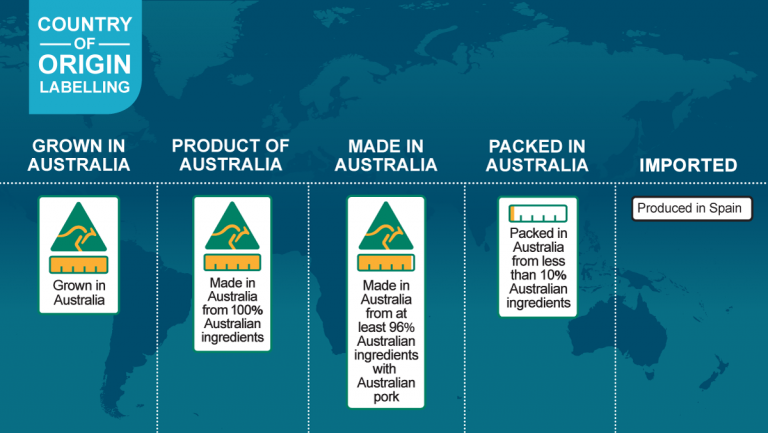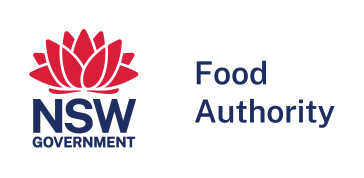
- Print this page
- Download as PDF
- Share this page

What is country of origin labelling?
Country of origin labelling tells us the country, or countries, where a food is grown, manufactured or packaged.
All packaged food must state whether it was made from imported or local produce, or a mixture of both.
Some unpackaged food, including fresh and processed fish, pork, beef, sheep and chicken mince, fruit and vegetables, must also display a country of origin label.
These labels can only be used if the key ingredients in the food originated in Australia and the food is manufactured in Australia:
- Product of Australia
- Produced in Australia
- Produce of Australia
These labels can only be used if the food has been significantly changed or processed in Australia and at least 50% of the cost of production has been incurred in Australia:
- Made in Australia
- Manufactured in Australia
Country of origin labelling is administered under Australian Consumer Law and is not a requirement under the Food Standards Code.
For more information on country of origin labelling, visit the Australian Competition & Consumer Commission website.
Seafood labelling in hospitality
Hospitality businesses will be required to label dishes containing seafood with country of origin information from 1 July 2026.
The changes aim to help consumers make more informed decisions about the seafood they choose to eat.
NSW Fair Trading will regulate the new requirements, which apply under Australian Consumer Law.
Businesses will need to label seafood dishes using the AIM labelling system - A for Australian, I for imported or M for mixed origin - in a way that is obvious to customers before they order.
The rules apply to seafood dishes served for immediate consumption, regardless of whether the food is eaten on the premises, takeaway or delivered.
For more information, see Country of origin labelling for seafood in hospitality
